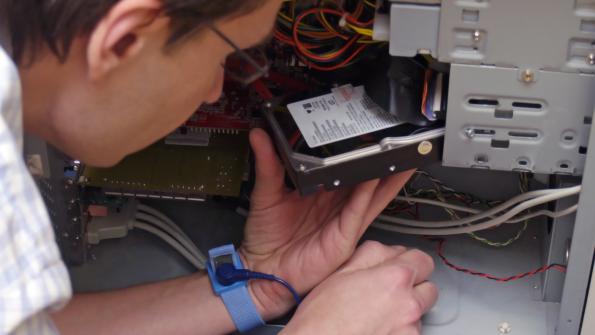Prolong the lifecycle of your agency’s equipment (with related video)
“Your equipment is at end-of-life.” — When a service technician tells you this, what does it really mean? End-of-Life (EOL) is a term used by Original Equipment Manufacturers (OEM) to describe a certain model of equipment that their organization has collectively decided to stop selling and supporting. The decision to designate equipment EOL is often fueled by the OEM’s necessity to promote, market, and sell new equipment and technology. Whatever the case may be, if you have received notification that your equipment is at end-of-life, discontinued, or obsolete, you are at a crossroads of having to make an important decision. Do you continue utilizing the equipment and cross your fingers that it never breaks again or crack open the piggy bank and purchase the newest model? 
In the past, most government agencies assumed that EOL meant their equipment was at the end of its usefulness and that replacement parts and consumables would soon be scarce. Many would immediately follow the manufacturer’s recommendation and purchase the latest and greatest. As we all know, money for new equipment isn’t always in the budget.
OEM Support
Equipment models classified as EOL will no longer be available for purchase from the manufacturer. However, the organization may still be able to provide service, technical support, parts, and consumables for a period of time. Get in touch with the manufacturer’s local service location as soon as you receive notice in order and find out an estimated time remaining for service and support.
Independent Service Organizations (ISO)
ISOs are generally founded by and staffed with former OEM employees that have experience with older generation models. Many specialize in certain manufacturers and modalities. Do some research before you require service. To assist the technician, consider creating a checklist. Confirm the service vendor is able to service your specific model of equipment. Ask if your location is in their service area. Find out what their hourly rates are for standard and afterhours service. Check that they have access to the parts required to repair your equipment. Ask if they guarantee their work. And, don’t forget to ask for references.
Tracking Equipment Maintenance and Repairs
If your goal is to extend the life of your electronic equipment for as long as possible, it is vital that you keep track of all service events, preventative maintenance, consumables, and all associated costs surrounding that equipment. Keeping accurate records on ALL of your equipment should become a best practice in your organization.
Equipment Maintenance Management Companies
Equipment maintenance management companies provide a program that ensures total equipment management and control, with a single point of focus and accountability. They supply an online reporting system, which allows purchasing managers and administrators the ability to access real-time information concerning all aspects of equipment and vendor performance. Furthermore, these companies work with thousands of service vendors and part suppliers nationwide and can help identify alternative local vendors that can service older equipment models and locate hard-to-find parts and consumables.
Extending the Life of All Equipment
Prolonging the life of your equipment might be as simple as initiating some new office policies. Below are just a few common sense ways to extend the useful life of all types of equipment assets. 
• Utilize the standby feature on desktops and laptops.
• Keep equipment at a safe distance from the wall to prevent overheating.
• Electronic equipment should not be positioned next to exterior windows for two reasons: to prevent sun damage or overheating and to prevent water damage if the windows should leak.
• Frequently wipe down surfaces of equipment to eliminate dust and dirt from getting inside, which can cause the cooling fan to overheat.
• Do not eat or drink around electronic equipment. Food particles can get lodged in open crevices and cause moving parts to jam.
• When in doubt, refer to the owner’s manual. The equipment’s owner manual will give specific instructions on the required room temperatures and/or humidity levels to ensure optimum productivity. Many operator’s manuals can be found online.
Jennifer Daugherty (photo at right) is a business development coordinator at Remi, the alternative to manufacturer service contracts and extended warranties. To learn more about Remi and the services they provide, visit this site, or call 1-888-451-8916, #1.
Learn more about Remi in the video. The video shows how REMI helps clients achieve savings on OEM service agreements.
_____________
To get connected and stay up-to-date with similar content from American City & County:
Like us on Facebook
Follow us on Twitter
Watch us on Youtube




















